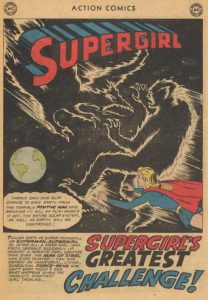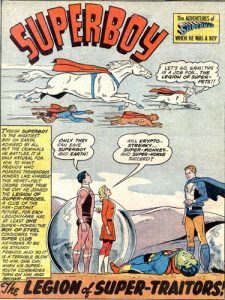 This is the beginning. This is the day. After four years as guest-stars in other strips, the Legion of Super-Heroes begin their own regular series in Adventure Comics. This tri-centennial issue proudly proclaims on its cover, “Featuring Superboy in ‘Tales of the Legion of Super-Heroes!'” Of course, there is only one such tale in this issue, and it’s the second feature. Ah well…
This is the beginning. This is the day. After four years as guest-stars in other strips, the Legion of Super-Heroes begin their own regular series in Adventure Comics. This tri-centennial issue proudly proclaims on its cover, “Featuring Superboy in ‘Tales of the Legion of Super-Heroes!'” Of course, there is only one such tale in this issue, and it’s the second feature. Ah well…
It doesn’t begin well: “Inside this Metropolis clubhouse, in the 21st Century…” Sigh… Jerry and Mort, once again couldn’t keep track of what time period these kids lived in. Or maybe they just didn’t care. Or maybe they were deliberately screwing with readers, just to see if anyone noticed. At any rate, this is the first Legion story that begins with the Legion, and in the 20th Century with Superman or Supergirl. Although, just as in Superboy and Supergirl stories, our first glimpse of the Legionnaires is of statues of them, not of the actual people. But the “Hall of Heroes” shows us, for the first time, that Shrinking Violet is now a member. She hasn’t been seen or mentioned since her first appearance as a candidate. Nor, ironically, does she appear in this story.









